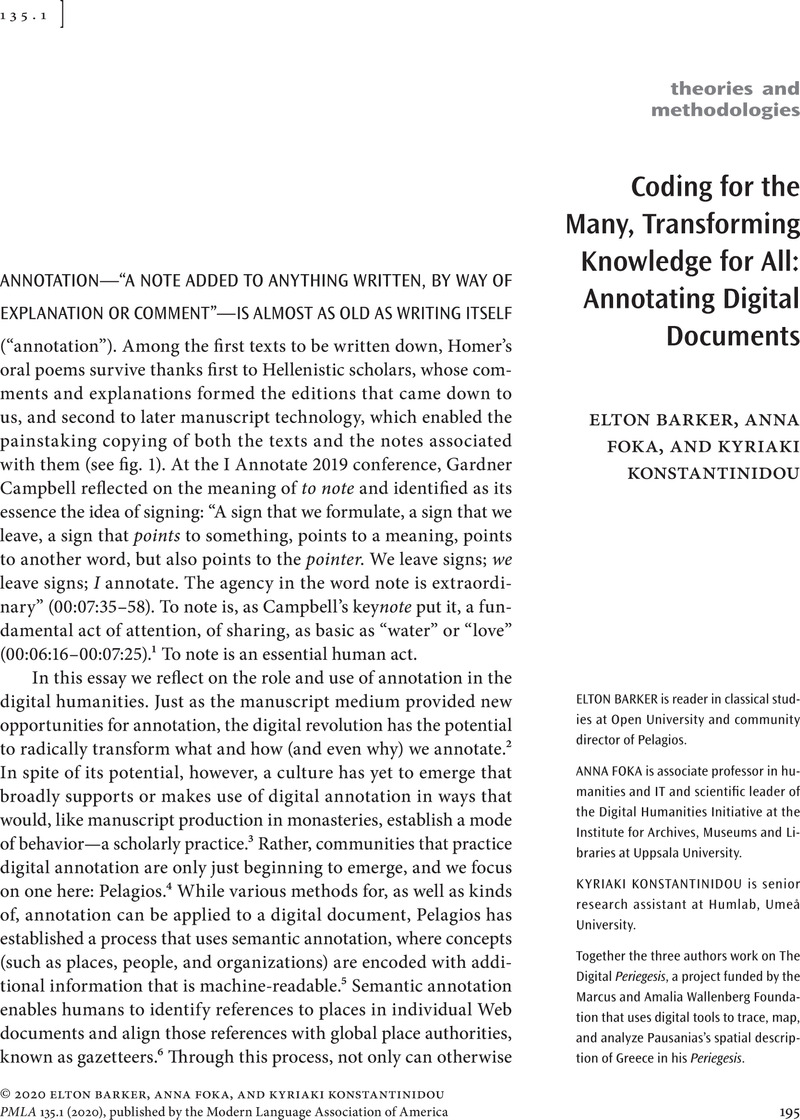Crossref Citations
This article has been cited by the following publications. This list is generated based on data provided by Crossref.
Foka, Anna
Barker, Elton
Konstantinidou, Kyriaki
Mostofian, Nasrin
Demiroglu, O. Cenk
Kiesling, Brady
and
Talatas, Linda
2020.
Semantically geo-annotating an ancient Greek "travel guide" Itineraries, Chronotopes, Networks, and Linked Data.
p.
1.
Foka, Anna
Demiroglu, Osman Cenk
Barker, Elton
Mostofian, Nasrin
Konstantinidou, Kyriaki
Kiesling, Brady
Talatas, Linda
and
Palm, Kajsa
2022.
Visualizing Pausanias’s Description of Greece with contemporary GIS.
Digital Scholarship in the Humanities,
Vol. 37,
Issue. 3,
p.
716.



